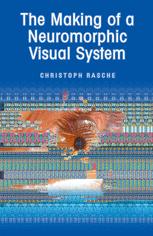

Most ebook files are in PDF format, so you can easily read them using various software such as Foxit Reader or directly on the Google Chrome browser.
Some ebook files are released by publishers in other formats such as .awz, .mobi, .epub, .fb2, etc. You may need to install specific software to read these formats on mobile/PC, such as Calibre.
Please read the tutorial at this link: https://ebookbell.com/faq
We offer FREE conversion to the popular formats you request; however, this may take some time. Therefore, right after payment, please email us, and we will try to provide the service as quickly as possible.
For some exceptional file formats or broken links (if any), please refrain from opening any disputes. Instead, email us first, and we will try to assist within a maximum of 6 hours.
EbookBell Team

4.1
100 reviewsThe reader is presented an approach to the construction of a visual system, which is behaviorally, computationally and neurally motivated. The central goal is to characterize the process of visual categorization and to find a suitable representation format that can successfully deal with the structural variability existent within visual categories. It does not define such representations a priori but attempts to show directions on how to gradually work towards them. The book reviews past and existent theories of visual object and shape recognition in the fields of computer vision, neuroscience and psychology. The entire range of computations is discussed, as for example contour extraction in retinal circuits, orientation determination in cortical networks, position and scale independence of shape, as well as the issue of object and shape representation in a neural substrate. Region-based approaches are discussed and are modeled with wave-propagating networks. It is demonstrated how those networks operate on gray-scale images. A completely novel shape recognition architecture is proposed that can recognize simple shapes under various degraded conditions. It is discussed how such networks can be used for constructing basic-level object representations. It is envisioned how those networks can be implemented using the method of neuromorphic engineering, an analog electronic hardware substrate than can run neural computations in real-time and with little power.